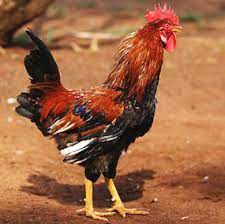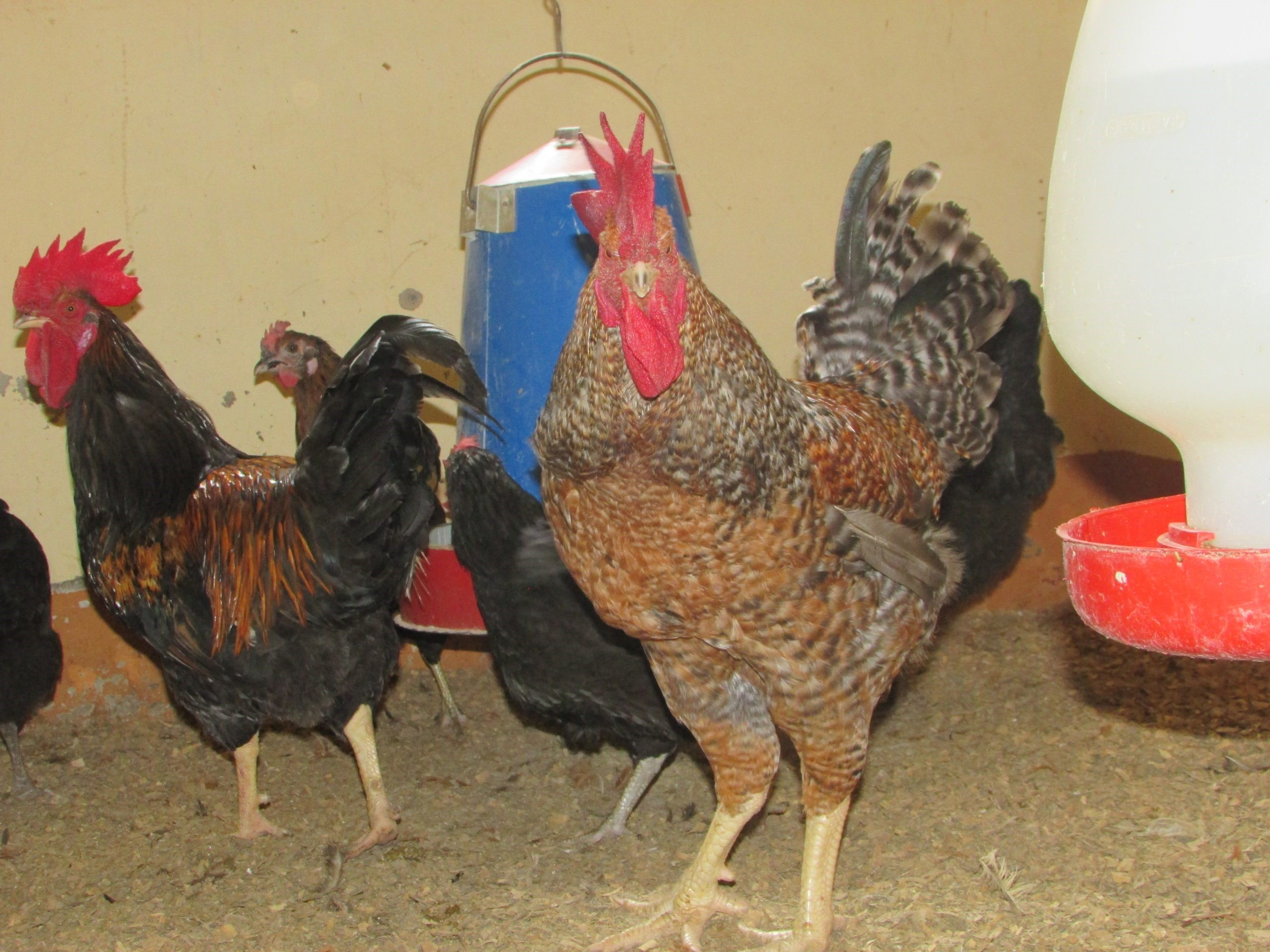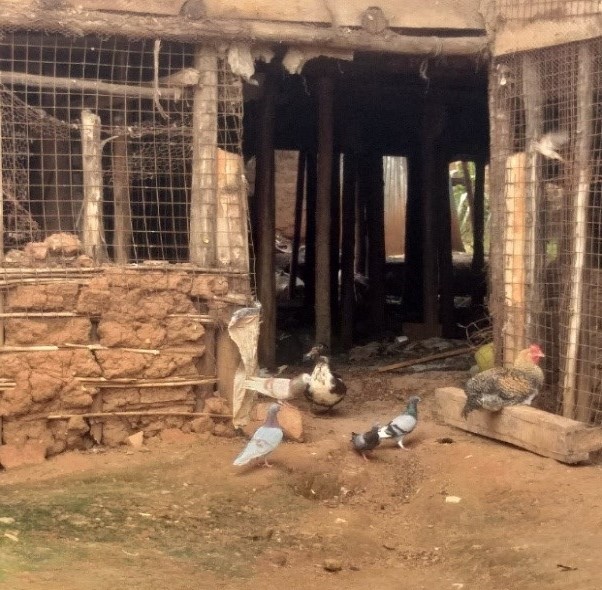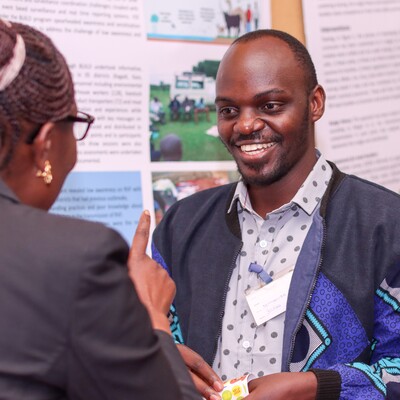

Uganda's poultry sector not spared by COVID-19 pandemic
The COVID-19 pandemic has resulted in the closure of poultry farms in Uganda because to lack of access to one-day-old chicks, reduced access to markets and inability of farmers to acquire feeds and extension services during and after the national lockdown.
This was revealed by a farm mapping exercise in Wakiso and Soroti districts in the country’s central and eastern regions, respectively, which was done by research fellows in the International Livestock Research Institute (ILRI)-led Boosting Uganda’s Investment in Livestock Development (BUILD) project’s antimicrobial resistance (AMR) component. The researchers were assessing poultry farms for a planned cross-sectional study that will assess poultry production challenges that could increase antimicrobial use in Uganda’s smallholder poultry farms.
AMR is one of 10 leading global health threats. The effects of AMR on public health are estimated to increase to 10 million human deaths annually with low- and middle-income countries disproportionately affected. Uganda has adopted a National Action Plan to address AMR with several action areas identified including in using research and innovation to reduce AMR use in livestock production. BUILD’s AMR component focuses on the drivers of antimicrobial use as well as the prevalence and transmission dynamics of antimicrobial resistant pathogens in intensive and free-range poultry meat farming systems.


A total of 272 farms were visited in the farm mapping exercise: 126 in Wakiso and 146 in Soroti. In Soroti, 98% of farms reared indigenous chicken breeds, 95% were rearing free range chickens and 34% reared other avian species such as ducks, turkeys, guinea fowls and pigeons. Furthermore, 72% of the farms reared other livestock species such as cattle, sheep and goats. In Wakiso, 43% of farms reared Kroilers, a hybrid chicken species, 37% broilers, and 33% reared layers.
Many farms were intensive (with 500-5,000 birds), and 70% reared other livestock species. In Wakiso, farmers attributed the shift from broilers to Kroilers to the high prevalence of poultry diseases such as Newcastle disease, chronic respiratory disease, fowl pox and infectious coryza; and high costs associated with broiler production, especially feeds.
Data collected during this mapping exercise will be used to inform the inclusion criteria of farms, sampling strategy and sample size calculation for BUILD’s AMR work. The absence of a comprehensive database of poultry farms and farmers in the project areas is a major challenge as it impedes assessment of inputs and outputs from the poultry sector.

The lack of biosecurity measures to prevent introduction and spread of pathogens on a farm such as proper decontamination and disinfectant between production cycles or pest control management protocols, and the outbreaks of presumably Newcastle disease, especially in Soroti’s free range system; highlight some potential areas of intervention to improve poultry production and to reduce antimicrobial use. Some farmers noted that most of the veterinary officers were not actively involved in poultry farming, which affected their confidence and trust of these veterinary officers. The farmers relied on other sources, such as feed producers for information about managing diseases in the poultry sector.
Inadvertently, the team found that not only had project-activity implementation been delayed, but many farms in the study area had stopped operations due to challenges arising from the COVID-19 pandemic. The nationwide lockdown instituted by the government as one of the measures to contain transmission of the coronavirus resulted in restricted movements, preventing purchasing of parent stocks that affected restocking of farms. Prices of farm inputs such as feed increased due to restricted imports and there was increased disease prevalence as veterinary service delivery was reduced. Individuals that had left the sector reported a sharp drop in prices of poultry products, which was the last straw that forced them to abandon poultry farming. However, poultry production is a growing sector and compared to other livestock farming, the inputs required to restart business would make it easier for those farmers to restart poultry farming.
Information from this exercise will be used by BUILD’s AMR team to modify the sampling approach to accommodate the varying production systems and housing types. The network of farmers and paraprofessionals identified will be useful for the study and for the project’s extension partner, Vétérinaires Sans Frontières-Germany (VSF-G), in supporting the provision of extension services and information to farmers at a time when extension officers are not actively involved in poultry farming.
Learn more:
Ndoboli, D., Mbatidde, I., Ayebare, D., Tenhagen, B.-A., Dione, M., Roesel, K. and Moodley, A. 2022. Antimicrobial resistance in the poultry value chain in Uganda: A post COVID-19 lockdown farm mapping visit of production systems in Wakiso and Soroti, Uganda. Paper presented at the German Veterinary Medical Society (Deutsche Veterinärmedizinische Gesellschaft) Conference, Berlin, Germany, 14 October 2022. https://hdl.handle.net/10568/131006
The video recording of the presentation: https://cgiar-my.sharepoint.com/:v:/g/personal/k_roesel_cgiar_org/EXlmBzXXt8BDlx0TkmncalYBxfMpjSfDs6XDRbmsZzwdoQ?e=ocxTye







